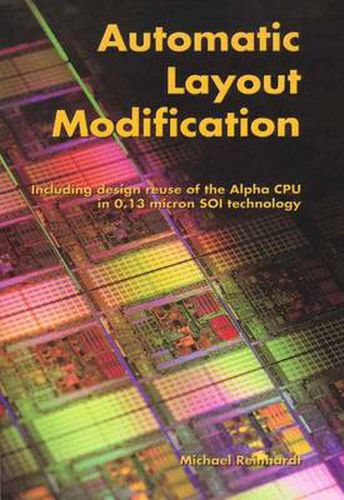Readings Newsletter
Become a Readings Member to make your shopping experience even easier.
Sign in or sign up for free!
You’re not far away from qualifying for FREE standard shipping within Australia
You’ve qualified for FREE standard shipping within Australia
The cart is loading…






This title is printed to order. This book may have been self-published. If so, we cannot guarantee the quality of the content. In the main most books will have gone through the editing process however some may not. We therefore suggest that you be aware of this before ordering this book. If in doubt check either the author or publisher’s details as we are unable to accept any returns unless they are faulty. Please contact us if you have any questions.
According to the Semiconductor Industry Association’s 1999 International Technology Roadmap for Semiconductors, by the year 2008 the integration of more than 500 million transistors will be possible on a single chip. Integrating transistors on silicon will depend increasingly on design reuse. Design reuse techniques have become the subject of books, conferences, and podium discussions, with most focusing on higher-level abstraction like RTL descriptions, which can be synthesized. Design reuse is often seen as an add-on to normal design activity, or a special design task that is not an integrated part of the existing design flow. This may all be true for the ASIC world, but not for high-speed, high-performance microprocessors. In the field of high-speed microprocessors, design reuse is an integrated part of the design flow. The method of choice in this demanding field was, and is always, physical design reuse at the layout level. In the past, the practical implementations of this method were linear shrinks and the lambda approach. With the scaling of process technology down to 0.8 micron and below, this approach lost steam and became inefficient. The only viable solution is a method called Automatic Layout Modification (ALM), which combines compaction, mask manipulation, and correction with powerful capabilities. This text is a comprehensive reference work on the subject.
$9.00 standard shipping within Australia
FREE standard shipping within Australia for orders over $100.00
Express & International shipping calculated at checkout
This title is printed to order. This book may have been self-published. If so, we cannot guarantee the quality of the content. In the main most books will have gone through the editing process however some may not. We therefore suggest that you be aware of this before ordering this book. If in doubt check either the author or publisher’s details as we are unable to accept any returns unless they are faulty. Please contact us if you have any questions.
According to the Semiconductor Industry Association’s 1999 International Technology Roadmap for Semiconductors, by the year 2008 the integration of more than 500 million transistors will be possible on a single chip. Integrating transistors on silicon will depend increasingly on design reuse. Design reuse techniques have become the subject of books, conferences, and podium discussions, with most focusing on higher-level abstraction like RTL descriptions, which can be synthesized. Design reuse is often seen as an add-on to normal design activity, or a special design task that is not an integrated part of the existing design flow. This may all be true for the ASIC world, but not for high-speed, high-performance microprocessors. In the field of high-speed microprocessors, design reuse is an integrated part of the design flow. The method of choice in this demanding field was, and is always, physical design reuse at the layout level. In the past, the practical implementations of this method were linear shrinks and the lambda approach. With the scaling of process technology down to 0.8 micron and below, this approach lost steam and became inefficient. The only viable solution is a method called Automatic Layout Modification (ALM), which combines compaction, mask manipulation, and correction with powerful capabilities. This text is a comprehensive reference work on the subject.